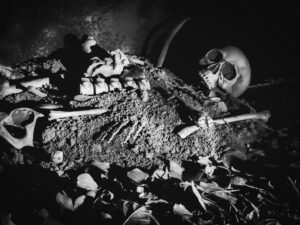
PROCEEDINGS OF THE NATIONAL ACADEMY OF SCIENCES—A collection of articles from “The Past 12,000 Years of Behavior, Adaptation, and Evolution Shaped Who We Are Today” Special Feature highlights bioarchaeological research on how human evolution in the Holocene Epoch has shaped the biology and behavior of modern humans. In the collection, a Perspective explores the effects of past rapid climate change on human health through a review of published case studies. The review revealed that climate change had diverse effects on patterns of epidemics, violence, and migration in past societies that were contingent on historical, sociocultural, and biological dynamics. Another Perspective reviews published genomic evidence to explore links between human dispersals and the spread of agriculture and language families across the world. The analysis revealed a complex history with highly variable genetic and linguistic outcomes when expanding groups encountered resident groups. In one study, researchers measured strontium and oxygen isotopes in the tooth enamel of 99 individuals buried at archaeological sites in Turkey spanning the 14th-6th millennium BCE, documenting reduced mobility, varied kinship practices, and arrival of nonlocals during the transition to large villages. A study of the variation and societal context of healed and unhealed violent injuries in skeletal remains from the Neolithic period of Northwestern Europe finds that violence was widespread and included intergroup conflicts that resulted in the destruction of communities, possibly motivated by increasing competition and inequality. Another study of trends in human body size over the past 35,000 years involving 3,507 skeletons from 366 archaeological sites finds that body sizes decreased before the adoption of agriculture, remained stable in regions where domestication originated, and increased in some regions coincident with the spread of dairying and lactose tolerance. Together, the collection explores trends and transitions in human health, nutrition, demography, and interpersonal conflict over the past 12,000 years.
________________________________

Skeletal sampling has provided data for Holocene Epoch human study. Niner09, Pixabay
________________________________
Article Source: PNAS news release
*“The past 12,000 years of behavior, adaptation, population, and evolution shaped who we are today,” by Clark Spencer Larsen, Proceedings of the National Academy of Sciences, 17-Jan-2023.10.1073/pnas.2209613120
________________________________
Advertisement

Don’t miss out on this unforgettable evening as Dr. Hawass reveals the most closely guarded secrets of ancient Egypt and presents his groundbreaking new discoveries and latest research live on stage. As the man behind all major discoveries in Egypt over the last few decades and director of several ongoing archaeological projects, Dr. Hawass may yet surprise you with unexpected revelations that will make news across the world.
________________________________
Advertisement





